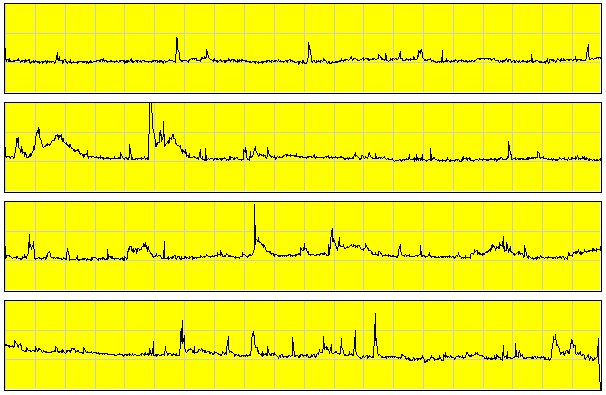
Radio Observation of the 2001 Leonids
Data Collection and Analysis
I used the FM radio system described on my main page. The 2001 Leonid meteor shower showed significant activity at its peak, much higher than the background rate of sporadic meteors of 3 - 5 meteors per hour. There were two distinct peaks in the hourly rate that corresponded to theoretical predictions. The first peak was predicted to arise from the 1766 comet debris field, and the second peak was predicted to arise from the 1699 and 1866 comet debris fields. The activity rates were determined by the same computer program that I used for my 1998 Leonid and Geminid studies. It counts as meteor signals all peaks with an initial rise greater than 20% of the background in one second. This criterion prevents noise signals from being counted as meteors, but it probably leads to an under-count. See my main page for more details.
2001 Leonid Data
The following are the raw data for the 2001 Leonids at its first peak, 11/18/01 4:00 AM - 6:00 AM EST, and at the second peak at noon - 1:00 PM EST. Each strip is a 15 minute trace.
Leonids for the period 11/18/01 4:00 AM through 11/18/01 5:00 AM EST

Leonids for the period 11/18/01 5:00 AM through 6:00 AM EST
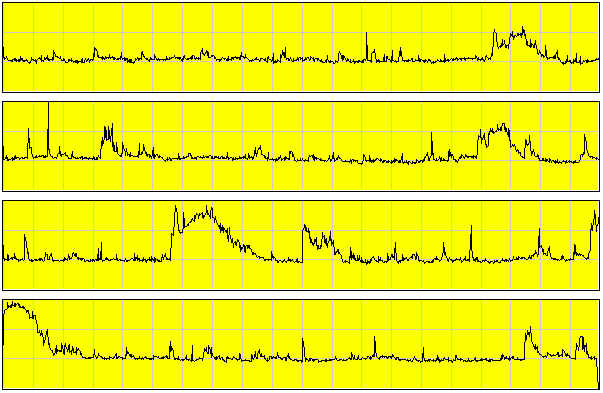
Leonids for the period 11/18/01 noon through 1:00 PM EST
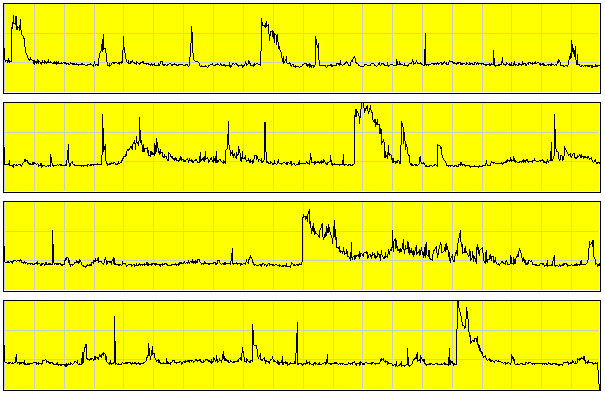
Rates for 2001 Leonids
The following graphs show the meteor count rates per hour that I measured for the 2001 Leonids. These rates were determined by a computer program that counted all peaks that climbed at least 20% above the background level in one second. The graph shows the rates observed from midnight EST 11/14/01 through 6:00 PM EST 11/19/01.
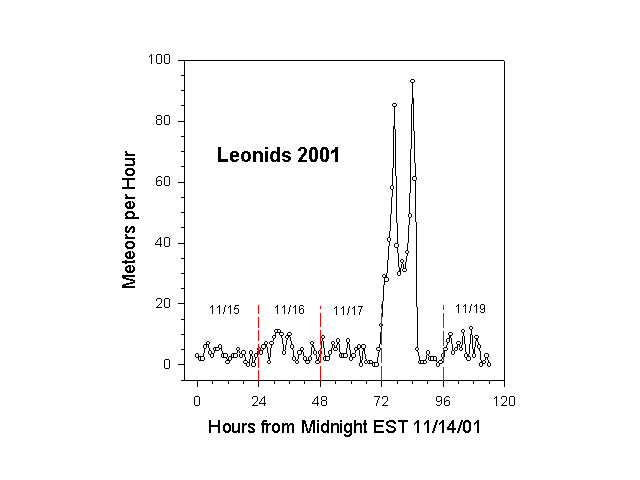
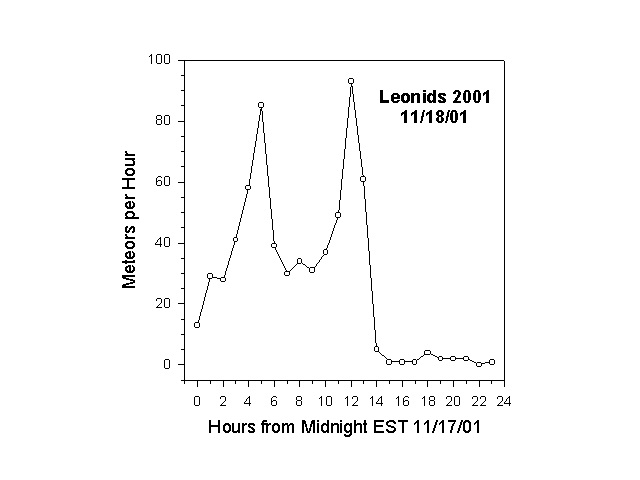
Summary
There were two rate peaks for the 2001 Leonid meteor shower. One occurred between 5:00 AM and 6:00 AM EST on November 18, 2001. The detected rate was 85 meteors per hour. The other peak occurred between noon and 1:00 PM EST on November 18, 2001. The detected peak rate was 93 meteors per hour. These peaks corresponded to the predicted comet debris fields.
Return to main page
Comments and technical questions can be addressed to me care of my father, Devlin Gualtieri, at Honeywell Laboratory, Morristown, NJ.